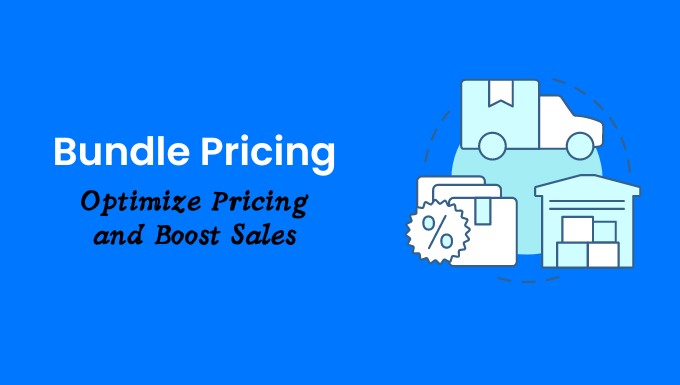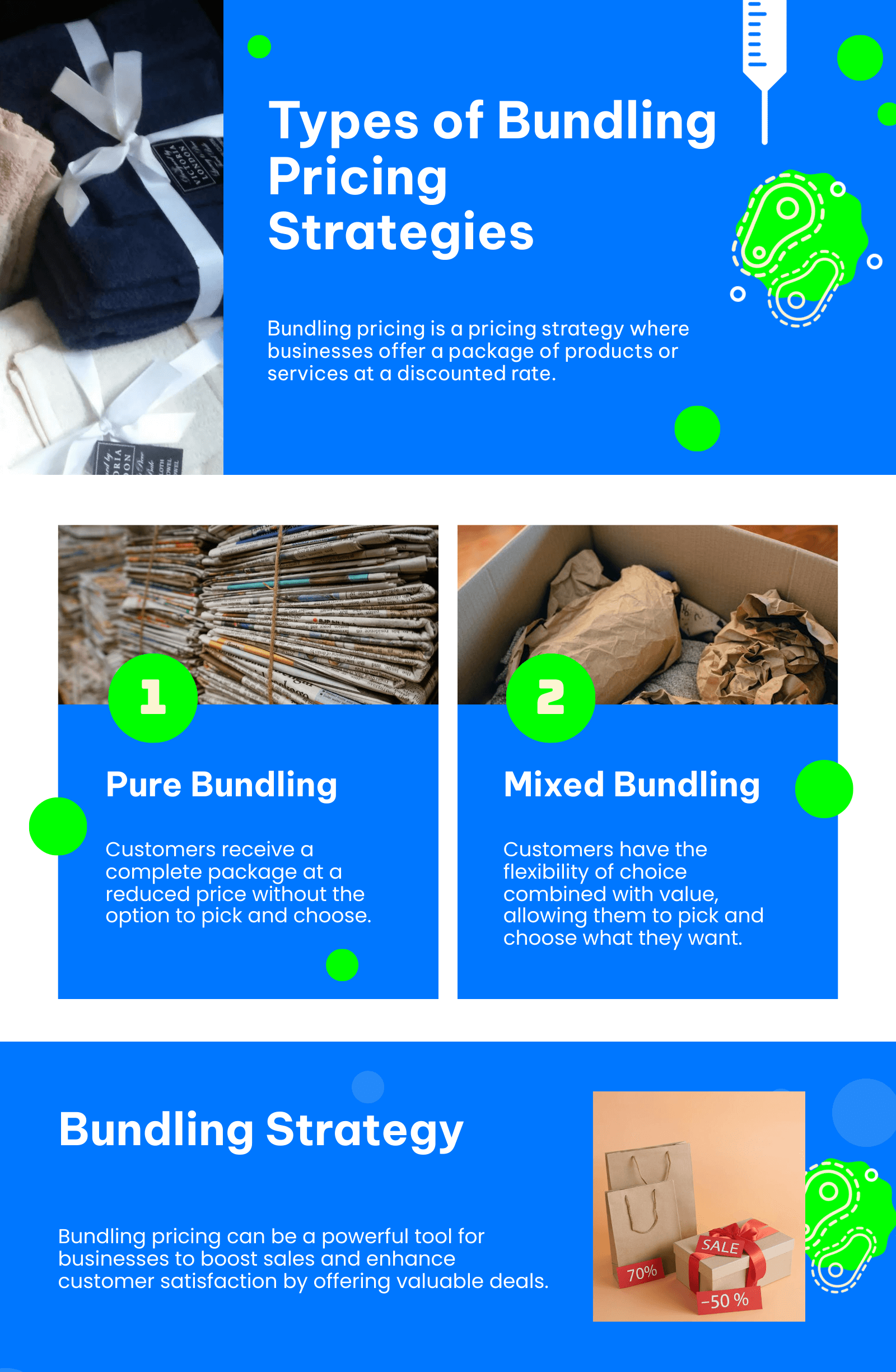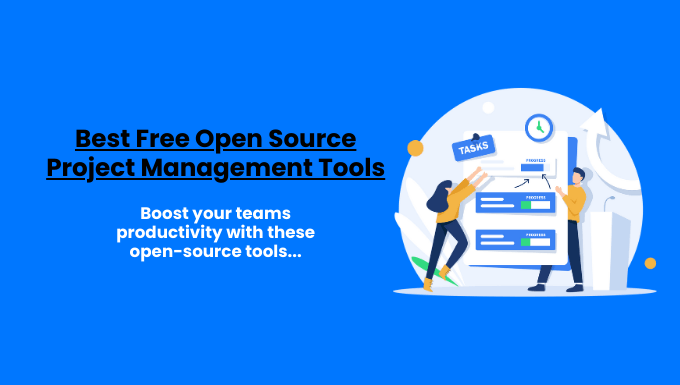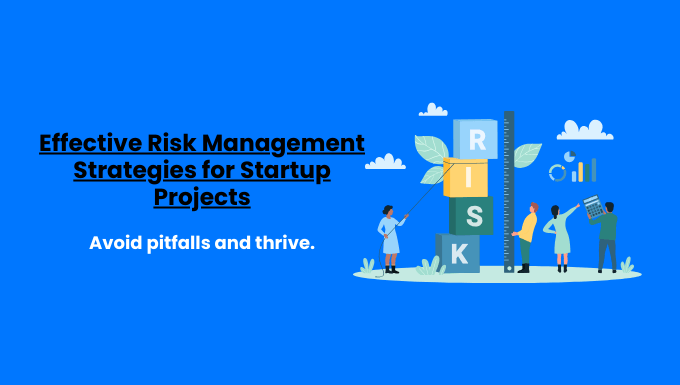Ever wondered how businesses entice you to buy more while feeling like you’re getting a steal?
Enter bundle pricing, the secret sauce of savvy entrepreneurs.
This powerful strategy combines products or services at a discounted rate, creating irresistible deals that benefit both customers and businesses.
Discover how price bundling can skyrocket your sales and keep customers coming back for more!
Key Takeaways:
- Bundle pricing offers customers more value while boosting business revenue.
- Two main types: pure bundling (fixed packages) and mixed bundling (flexible options).
- Effectively communicate bundle value to overcome potential challenges.
- Carefully select complementary products and price points for successful bundles.
- Align bundle strategies with brand positioning and customer preferences.

Contents
ToggleThe Magic of Consumer Surplus
Have you ever come across the term “consumer surplus“?
It’s that delightful zone where customers perceive they’re gaining more value than what they’re spending.
Bundle pricing capitalizes on this psychology by presenting a lower total price for bundled products, instilling in customers the sense of making a savvy purchasing choice, and proving that bundle pricing is a great way to enhance value perception.
Why Bundle Pricing Rocks
- Boost Sales Volume: By bundling products together into an entire bundle, businesses can increase the number of items sold in one transaction, thereby enhancing their overall sales volume.
- Showcase Specific Products: Bundle pricing serves as an excellent method to spotlight particular products that may not be selling as well individually. A bundle that includes these items with more popular ones can increase visibility and sales.
- Simplify Decision-Making: Customers appreciate simplicity. Offering bundled options eliminates decision-making guesswork, making it simpler for customers to select their desired items.
Imagine stepping into a tech store in search of a new laptop.
You come across a bundle deal comprising the laptop, a wireless mouse, and a laptop bag at a discounted price.
Instead of just purchasing the laptop, you opt for the bundle because, let’s face it, who can resist a great deal?
This option to purchase a bundle that includes the laptop and essential accessories enhances the deal’s allure significantly.
Types of Bundling Pricing Strategies
In the dynamic landscape of business strategies, bundling pricing emerges as a potent tool for companies to offer value-packed deals to their customers.

Let’s explore the two primary types of bundling pricing strategies that can empower businesses to enhance sales and delight their customers.
1. Pure Bundling: Less Choice, More Value
Pure bundling mirrors a combo meal experience, customers receive a complete package at a reduced price without the option to pick and choose.
This bundle pricing example shows how effective the strategy can be in simplifying customer choices while providing value.
Consider HelloFresh, which provides meal kits with all the necessary ingredients for a scrumptious dish, offering convenience and savings in one package, illustrating how bundle pricing allows for innovative service offerings.
Similarly, purchasing a camera often includes bundled lenses because a camera without a lens is like a story without a plot.
2. Mixed Bundling: Variety Meets Value
In contrast, mixed bundling offers customers the flexibility of choice combined with value, proving that mixed bundling allows a nuanced approach to customer engagement and sales strategies.
Think of movie theater snacks or fast food combos where you can opt for individual items or choose the combo deal for a complete experience at a better price point, embodying how price bundling makes purchases more appealing.
Kylie Cosmetics excels in mixed bundling with their lip kits, allowing customers to buy the lip liner and lipstick separately or indulge in the perfectly paired bundle for added convenience, showcasing how mixed bundling allows for flexibility and choice.
Who Uses Bundle Pricing?
In the dynamic realm of business, pricing strategies play a pivotal role in shaping a company’s success.
One strategy that stands out for its effectiveness across various industries is bundle pricing, a method that combines items in the bundle to offer at a lower price.
Businesses can use these tactics to offer customers more value at a low price.
Let’s explore the key players who leverage this strategy and the substantial benefits it offers to businesses of all sizes.
Restaurants: Serving Up Value
Imagine stepping into your favorite fast-food joint and being greeted by an irresistible combo meal deal.
Restaurants excel in offering value-packed combo meals that lure customers to purchase multiple items together at a discounted rate.
By bundling an entrée, a side dish, and a beverage, customers not only get more value for their money but also drive up the restaurant’s revenue. This bundle pricing strategy adds value to the entire bundle, making it an attractive buy.
Examples of bundle pricing in action demonstrate how this strategy benefits both businesses and consumers, serving as common bundle pricing examples.
Internet and Cable Companies: Connecting Customers
Internet and cable companies are well-versed in the art of bundle pricing.
By bundling services such as television, internet, and phone into appealing packages at a reduced price, these companies employ a marketing strategy to entice customers to subscribe to multiple services as part of a bundle.
This not only enhances customer retention but also boosts overall revenue. Bundle pricing can also help in crafting pricing strategies to increase customer loyalty and encourage repeat purchases.
It’s a strategic maneuver that keeps customers connected while bolstering the bottom line.
Retail Stores: Mixing and Matching Deals
Retail stores have their unique take on bundle pricing, offering an array of enticing deals to captivate shoppers with product bundles based on popular demand and seasonal needs.
From discounts on multiples of the same product to mix-and-match promotions, retail outlets keep customers engaged with compelling offers, often by offering a single price for a package at a discounted price.
Picture snagging a “Buy 2, Get 1 Free” deal on your favorite products, that’s the influence of bundle pricing in action, propelling sales and enhancing customer satisfaction concurrently.
Advantages and Disadvantages of Bundle Pricing
Advantages of Bundle Pricing Strategies
Imagine walking into a store with your eyes set on a single item, only to be tempted by a bundle deal that includes that item along with a few extras at an irresistible price.
The bundle also introduces a new product seamlessly.
What do you do?
Chances are, you end up with more in your cart than you planned, particularly with products included in the bundle.
That’s the magic of bundle pricing, a classic example of a marketing strategy in action!
- Increased Sales and Revenue: Bundle pricing isn’t just a win for customers; it’s a jackpot for businesses too.
Effective bundle pricing allows companies to sell combinations of products that may otherwise move slowly, significantly increasing overall sales.
By offering a bundle at a value-packed price, you can entice customers to buy more than they intended. This is a testament to how effective the bundle pricing technique can be in increasing sales volume, especially when customers recognize the value in the total price of the bundle.
This not only boosts your sales but also enhances your revenue streams significantly through strategic price bundling, particularly when you offer a bundle that includes products tailored to customer preferences. - Creating Awareness for Slower Products: Do you have items languishing on your shelves?
Bundle pricing can be your savior, leveraging a variety of pricing strategies to create offers that customers find too good to pass up. By pairing up slow-moving products with your best-sellers, you can clear out inventory swiftly.
Additionally, you might introduce customers to products they never knew they needed as part of a bundle, giving a fresh lease of life to your slower items and adding value to the entire bundle. - Simplifying the Buying Experience: Ever felt overwhelmed by the plethora of choices while shopping?
Bundle pricing simplifies decisions by encouraging customers to choose the bundle instead of individual items, particularly when the bundle contains items that complement each other well.
Bundle pricing acts as a superhero, streamlining the decision-making process for customers by offering all parts of the product in a bundle at a single price.
With fewer choices to ponder over, customers can make quicker purchasing decisions, leading to satisfied shoppers and increased profitability for your business.
Disadvantages of Bundle Pricing Strategies
Before you plunge headfirst into the realm of bundle pricing, it’s crucial to be mindful of a few potential pitfalls, including the risk that the individual price may be overlooked.
- Limited Customer Choice: While bundle pricing can work wonders for many, some customers prefer the freedom to pick and choose individual items.
Suppose your offerings are tightly bundled without the option to purchase items separately. In that case, you might risk turning away customers who value the flexibility to mix and match, which is why implementing two types of bundle pricing can offer solutions. - Profit Margin Reduction: While bundle pricing can ring in sales, proceed with caution.
Effective bundle pricing can benefit a company by boosting sales volume while maintaining reasonable profit margins.
Offering significant discounts on bundles can erode your profit margins swiftly, yet use price bundling carefully to maintain profitability. It’s essential to strike a delicate balance between boosting sales volume and safeguarding your bottom line.
Common Challenges of Bundle Pricing Strategies
- Communicating Value: One of the significant challenges in implementing bundle pricing strategies is effectively communicating the value of the bundle to customers, ensuring they understand the total price of the bundle and its benefits.
Proper messaging can highlight the bundle also offering exceptional savings. Imagine creating an enticing bundle of products or services, only for customers to overlook it due to a lack of perceived value. - Customer Perception: Managing customer perception is another hurdle businesses face with bundle pricing, and understanding the two types of bundle pricing can help in devising more effective strategies.
Picture bundling products together to offer a great deal, only for customers to feel pressured into purchasing items they neither want nor need.
This can leave a negative impression and deter future purchases, similar to convincing someone to buy a winter coat in the midst of summer.
Effective bundle pricing should always ensure that the bundles offered are seasonally appropriate and add value to the customer, exemplifying how joint bundling and leader bundling can be utilized. - Potential Cannibalization: While bundle pricing can attract customers with attractive deals, there’s a risk of cannibalizing sales of standalone, higher-priced items.
Customers might opt for the bundle, assuming it provides a better value compared to the individual price, impacting individual product sales, especially if items in the bundle are perceived as having greater value.
This scenario illustrates the power of bundling strategies in redirecting consumer choices. It’s like a magician revealing the main act too soon; potentially overshadowing other offerings included in the bundle, a risk when customers don’t choose the bundle. - Operational Strain: Managing bundles entails more than just packaging products; it requires meticulous inventory control and resource management.
Balancing stock for bundled items against individual sales is a delicate task, akin to juggling flaming torches on a unicycle.
Examples of bundle pricing clearly show the complexity involved in such strategies.
Precision and foresight are key to avoiding operational challenges.
Factors to Consider When Implementing Bundle Pricing
Let’s discuss the effectiveness of bundle pricing as a marketing strategy! Today, we’re delving into the world of bundle pricing, a strategy that can elevate your business to new heights.
Bundle pricing is a business model that leverages the power of combined offerings to enhance customer satisfaction and drive sales.
Let’s explore the key factors you need to consider to maximize the potential of this pricing approach, keeping in mind the importance of selecting popular products for leader bundling.
- Identify Complementary Products or Services: Picture yourself at a restaurant where they offer a combo meal with a burger, fries, and a drink as part of a bundle.
This is an excellent example of bundle pricing where businesses can use food pairings to encourage sales.
These items complement each other perfectly, creating a value-packed meal. Similarly, when utilizing bundle pricing, seek out products or services that synergize to enhance the overall value proposition for your customers. - Choosing the Right Pricing Strategy: Pricing is both an art and a science.
When employing bundle pricing, it’s essential to select a strategy that strikes a balance between attracting customers and maximizing profits.
Consider how you can craft irresistible offers that customers simply can’t resist using a variety of pricing strategies, including mixed bundling. - Effective Communication & Promotion: Having a stellar bundle pricing strategy is fantastic, but if it’s not effectively communicated, it won’t yield the desired results.
Effective bundle pricing requires clear marketing to ensure customers understand the value being offered. Communication plays a pivotal role in explaining the benefits of mixed bundling allowing customers to perceive higher value in product bundles based on their needs.
Ensure that you convey the value of your bundles to customers through your marketing efforts, highlighting the total price of the bundle and how it represents a saving compared to buying items separately. - Customer Preferences Matter: Ultimately, your customers are the ones who will be purchasing your bundles. Recognizing their preferences can guide your bundling strategies to better meet their needs and ensure pricing allows companies to sell more effectively.
Recognizing their preferences can guide your bundling strategies to better meet their needs.
Pricing strategies to increase customer satisfaction through bundles should also consider including an option to purchase a bundle that caters directly to customer needs and preferences, incorporating aspects of joint bundling and leader bundling. - Finding the Pricing Balance: It’s a delicate balancing act between offering an attractive price to customers and ensuring profitability for your business.
Discovering that sweet spot where both parties feel they’re getting a great deal is crucial for the success of your bundle pricing strategy. - Carefully Curate Product Selection: Not all products or services are created equal. When implementing bundling strategies, focusing on complementary products can enhance the appeal of the bundle.
When assembling a bundle, choose items that complement each other and add value to the customer’s purchase.
Ensure each item contributes to the overall appeal of the bundle, thereby justifying the decision to purchase a bundle. - Align with Brand Positioning: Your bundle pricing strategy should align with your brand’s positioning in the market, considering the total price of the bundle to ensure competitive advantage.
Whether you’re focusing on luxury, affordability, or innovation, ensure your bundles reflect the image you wish to convey to your customers, highlighting how bundle pricing allows for flexible pricing strategies.
People Also Asked
1. Why is bundle pricing used?
Imagine this: You walk into a store planning to buy a single item, but then you spot a bundle deal that includes that item plus a few more goodies at a lower price, effectively using the bundle pricing strategy to entice purchases.
Voilà! This is an insight into how bundle pricing, a strategy that includes considering the total price of the bundle, can dramatically improve sales if executed correctly.
Bundle pricing is a marketing strategy that transforms how products are perceived.
That’s the magic of bundle pricing.
It’s like stumbling upon a hidden treasure without even searching for it, much like discovering the unexpected value of an entire bundle.
2. What is bundled and unbundled pricing?
In one corner, we have bundling, the art of combining multiple items to create a value-packed offer.
The bigger the bundle, the more appealing it becomes to customers, especially when the entire bundle is offered at a discounted package price, demonstrating how bundling is a pricing strategy designed to increase sales volume.
On the other side, there’s unbundling, the breakup artist of pricing strategies.
It’s all about breaking offers into smaller, more manageable pieces, often seen in how mixed bundling allows customers to pick and choose to customize their bundle.
3. Can bundle pricing strategy be applied to any business?
Absolutely!
Whether you’re in the business of selling products, services, or a mix of both, bundle pricing can work wonders for you, showcasing that pricing is a marketing strategy with broad applicability.
However, tread carefully! Use price bundling as a strategic tool but be mindful of its impact on the perception of individual product value.
If your products are already selling like hotcakes at full price, offering a cheaper bundle might cannibalize your sales, unless the bundle is carefully designed to boost product sales without affecting individual item value.
So, choose your bundles wisely, dear entrepreneurs. Bundling allows for a unique opportunity to introduce new products within established bundles.
4. How do I decide which products to bundle?
How do you determine which products to bundle together for maximum impact?
Data supports the effectiveness of types of price bundling strategies in driving sales. Delve into your customer insights and product performance metrics to uncover winning combinations that can be enhanced through custom bundling.
Let the numbers guide you to the pot of gold at the end of the rainbow, especially when applying a price bundling strategy to maximize profit.
By analyzing customer preferences and popular items, you can create bundles that open wallets and bring joy to hearts.
5. How does product bundle pricing work?
Picture this: You enter a store eyeing a few products, and then you come across a bundle offer that’s too good to pass up. That’s the allure of product-bundle pricing, where every item offered in the bundle contributes to the overall value perceived by the customer.
It entices customers to bulk up their purchases, often convincing them to purchase a bundle that appears more valuable.
Even if they don’t need everything in the bundle, they can still pick and choose individual items. It’s a win-win situation for everyone involved.







